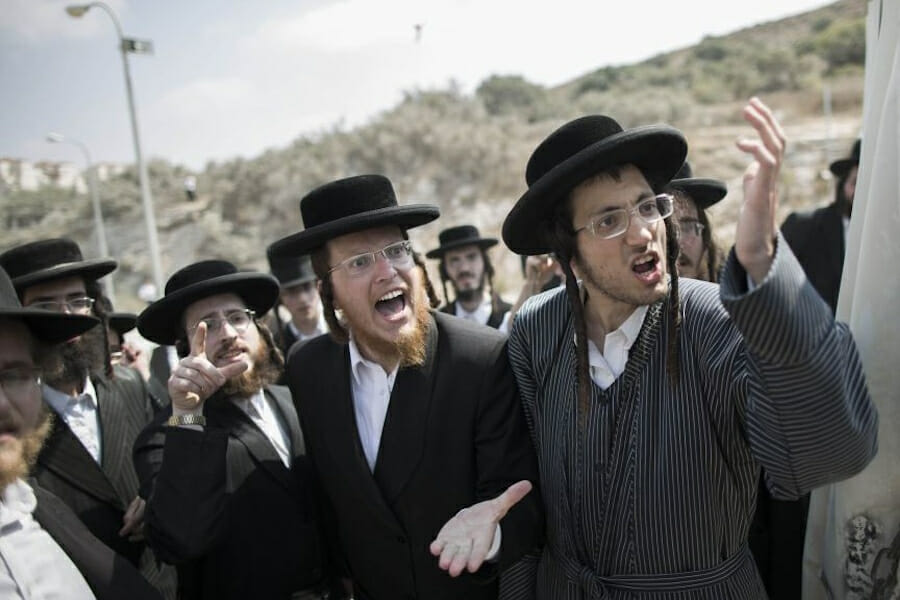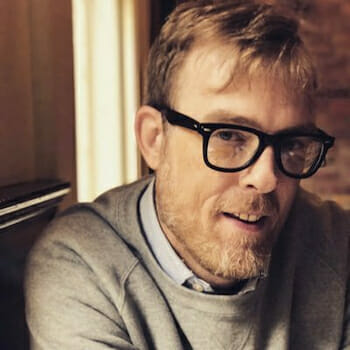
The Internal Debate over Israel’s Identity
Protests between secular and ultra-Orthodox Israelis centered in the town of Beit Shemesh, Israel have shed light on a trend line. According to the Israel Central Bureau of Statistics, and reported by The Jerusalem Post, the population of Israel, including the occupied territories is 7,836,000 million, of which, 5,901,000 are Jews. Protests earlier in the week ended with one police officer being wounded after several hundred ultra-Orthodox men objected when the police removed a sign that ordered women in Beit Shemesh to walk on the opposite side of the street from men. While a majority of Israeli Jews would define themselves as secular Jews, within Israel 10% of the population is ultra-Orthodox. Importantly, ultra-Orthodox Jews have a high birth rate, which translates into a clash of ideals between secularists and Orthodox Jews, like that unfolding in Beit Shemesh.
The protests between these two passionate groups began after reports by Israeli media of an eight year-old girl, Naama Margolese, who while walking home from school was harassed by Orthodox men in the town of Beit Shemesh. Although the girl and her family consider themselves Orthodox Jews, this fact has not appeased the Orthodox men of Beit Shemesh who are demanding that in all facets of life, Beit Shemesh must be segregated.
This translates into men and women being separated along gender lines on public transportation and on sidewalks. This interpretation of religious law would also apply to attire that women wear in public. Ultra-Orthodox men in Beit Shemesh often complain that the women and girls of Beit Shemesh dress like prostitutes and need to practice “modesty” in public.
The New York Times Isabel Kershner writes, “Ultra-Orthodox men and boys from the most stringent sects have hurled rocks and eggs at the police and journalists, shouting ‘Nazis’ at the security forces and assailing female reporters with epithets like ‘shikse,’ a derogatory Yiddish term for a non-Jewish woman or girl, and ‘whore.” Further, the Orthodox men of Beit Shemesh who would like to see men and women segregated, would also like to see gender segregation in the military and across wider Israel.
In an interview with the Associated Press, Naama recounted how she was sickened by the thought of walking to and from her school, Orot Banot, in Beit Shemesh. “When I walk to school in the morning I used to get a tummy ache because I was so scared…that they were going to stand and start yelling and spitting,” Naama told the Associated Press. “They were scary. They don’t want us to go to the school.”
Naama’s mother, Hadassah Margolese, in an interview with the BBC, recounted the daily insults her daughter faces while walking home from school. After school, when the girls make their way home, pockets of ultra-Orthodox men can be found waiting for them on the street and throwing insults, stones, tomatoes and feces at the girls. “These are little girls who are being abused every day and then they end up at night with nightmares,” Hadassah told the BBC. “My daughter is anxious on a daily basis now. When walking to school, when coming home from school, she either smells something that they’ve done on our streets – yesterday there were faeces [sic] on the stairs – or she’s worried, she’s scared of just the noise. Whenever she hears a noise she asks, ‘are they there, are they out there?”
The row between secular and ultra-Orthodox Jews has prompted Israel’s prime minister, Benjamin Netanyahu, Israel’s president, Shimon Peres, and opposition leader, Tzipi Livni to get involved and side with the protesters in clashes with ultra-Orthodox men. In broadcasted remarks to his cabinet, Netanyahu was emphatic that Israel must respect the rights of women. “In a Western, liberal democracy, the public realm is open and safe for all, men and women both, and neither harassment nor discrimination have any place there,” Netanyahu said. During a rally in Beit Shemesh, Tzipi Livni told those present, “(the protesters are) fighting for the image of the state of Israel,” Livni said. “It’s not just Beit Shemesh and not just gender segregation, it’s all the extremist elements that are rearing their heads and are trying to impose their worldview on us,” Livni stressed.
Israeli president, Shimon Peres, has also come out in favor of the protesters in Beit Shemesh, arguing, “[the] entire nation must be recruited in order to save the majority from the hands of a small minority.” Peres argued in no uncertain terms that the divide being advocated by ultra-Orthodox men has the potential to divide Israel along religious lines.
One idea being floated is to divide Beit Shemesh into two partitioned areas, with ultra-Orthodox residents on one side and everyone else on the other. According to reporting by the Yediot Aharonot, Netanyahu had floated the idea to Eli Yishai and Ariel Attias of the Shas Party, but has since distanced himself from this position or appears to be undecided once he realized the solution was unpopular. Shelly Yacimovich, a member of the Knesset and leader of the Labor Party, criticized the idea of dividing Beit Shemesh along religious lines and labeled it “dangerous.” “According to this idea, it is possible to divide Israel into several countries with different worldviews,” Ms. Yacimovich said. “The country’s leadership is supposed to unite Israel’s diverse population. Dividing Beit Shemesh is tantamount to waving a white flag over the entire Zionist enterprise.”
However the turmoil in Beit Shemesh will play out over the coming days and weeks, the protests and violence between secularists and Orthodox Jews is not unique to Israel. Countless societies face conflict between groups within their societies. However, this case is unique in one respect. Israel is a relatively small country with secular and Orthodox Jews essentially crammed together within its boundaries. If, in order to expand Israel’s borders they decide to build more settlements, they are criticized by the international community. For this reason, interpretations of religious laws are often in conflict and the adherents sometimes clash, often passionately. These clashes, between ultra-Orthodox men and secular Jews, will inevitably increase as the population of Orthodox Jews increases. Obviously, a compromise must be found where the views of the minority are respected while taking into account the values of the society around them.

